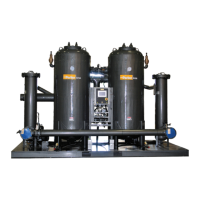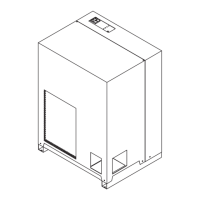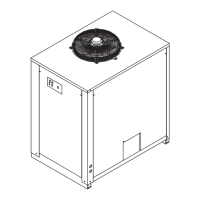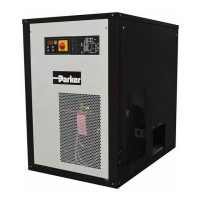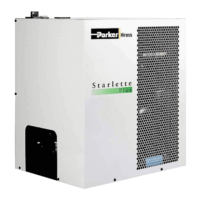Do you have a question about the Parker Airtek TWP1500 and is the answer not in the manual?
Important safety guidelines for operating the desiccant dryer.
Caution regarding hot surfaces and high noise levels during operation.
Information on emergency stop button and power supply disconnects.
Warning about high temperatures in downstream piping after switchover.
Inspect dryer for damage and verify included documentation.
How compressed air is dried and vessels regenerate.
Process of regeneration using heated purge air.
Process of regeneration using ambient air and a blower.
Wiring connections for the PLC and control power circuits.
Wiring for the Human-Machine Interface and sensor inputs.
Wiring for PLC outputs controlling solenoid valves and heaters.
Wiring for heater and blower contactors and associated circuits.
Wiring for isolated thermocouple inputs to PLCs.
Verifying connections, pressurizing the system, and initial dryer pressurization.
Starting the dryer in heatless or heated regeneration modes.
Installing mufflers and setting purge pressure.
Checking heater operation and over-temperature settings.
Energy-saving feature extending drying cycles based on dewpoint.
Feature for advancing through regeneration states for maintenance.
Overview of the HMI screen elements and navigation.
Description of buttons for menu, alarms, stepping, standby, and login.
Displaying active alarms and their descriptions.
Functionality to reset active alarms and restart the dryer.
Detailed list of alarms, their descriptions, settings, and notes.
Troubleshooting steps for dryer not operating or failing to switch states.
Diagnosing problems related to insufficient heat or high dewpoint.
Identifying causes and solutions for air loss and pressure drops.
Troubleshooting back pressure and inlet/exhaust valve issues.


